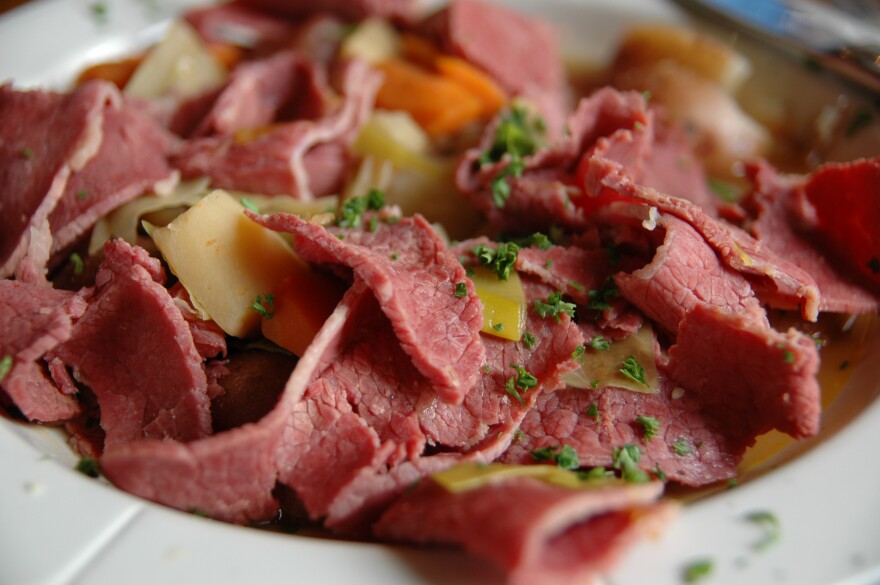“There are only two kinds of people in the world,” an Irish saying goes. “The Irish and those who wish they were.”
If you look around on St. Patrick’s day, you might think that’s true, for on St. Patrick’s Day Americans, regardless of their ancestry, will wear green, sing Irish songs, guzzle Irish beer, and dine on corned beef and cabbage.
But not in Ireland. There you’d be lucky to find more than a handful of packages of corned beef in any of the local supermarkets.
That’s because, contrary to popular belief, corned beef and cabbage is not the national dish of Ireland. You won’t find it on menus there except in places where there is a lot of tourist traffic. Some food historians even go so far as to question whether the dish is actually Irish at all. At best, only half of it—the cabbage—is truly Irish.
Cabbage has long been a component of the Irish diet, but traditionally it was served with Irish bacon, not corned beef. No wonder Bridget Haggerty, an Irish-born authority on Irish culture now living in the U.S., claims that she never tasted corned beef and cabbage until she came to this country. The dish is about as Irish, she says, as spaghetti and meatballs.
It turns out that before modern times beef was never part of the typical Irishman’s diet, being a delicacy instead, reserved for royalty. Eating beef was an extravagance. But when Irish immigrants came to this country, however, they discovered that corned beef, not to mention cabbage, was cheap and the tradition of cooking and serving them together, a purely American tradition, was born.
Nonetheless, you can reject as specious the claim that corned beef and cabbage is Ireland’s national dish without in any way denying its delectability. On St. Patrick’s Day or any other day, it’s peasant food fit for a king.
+++++Roasted Corned Beef with Sautéed Cabbage+++++
Traditionally corned beef and cabbage are boiled together, but this recipe, adapted from the simplyrecipes.com website, calls for a different approach that results in a decidedly more flavorful dish.
- 3 pounds corned beef
- 10 whole cloves
- 6 tablespoons honey mustard, divided
- 2 tablespoons brown sugar
- 2 tablespoons olive oil
- 1 medium onion, chopped
- 1 clove garlic, minced
- 1 large head cabbage, sliced into ½-inch wide slices
- Salt
Drain corned beef from package, discard spice packet, and lay fat side up on a large piece of heavy duty foil. Spread top of beef with ¼ cup mustard. Insert cloves, spacing evenly. Sprinkle with brown sugar. Wrap loosely with the foil and place in roasting pan. Bake at 350 degrees for two hours. Open foil, spread remaining two tablespoons mustard over top and broil 2-3 minutes until the top is bubbly and browned. Let rest 10 minutes before slicing. Heat olive oil over medium-high heat, add onions, cooking for 2-3 minutes, then add garlic. Add cabbage, stir to coat with oil and mix with onions. Sprinkle lightly with salt, and cook without stirring until starting to brown. Lift cabbage with metal spatula, scraping browned bits as you go, and turn over, continuing to cook until tender. Depending on the size of your pan you may need to do this in batches, adding more olive oil as necessary.





